Spring river nearly overflows its banks,
Grasses there are as green as nature intended.
No one comes to my quiet little hut.
When the wind blows the gate opens by itself.
– Tokiyori Hojo
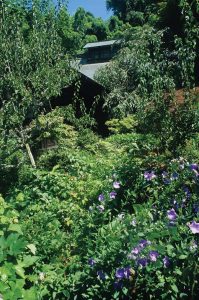
Chinese bellflowers bloom in the fore garden of Zuisen-ji a temple occupying a very naturalistic setting.
This description of harmonious co-existence with nature and one’s surroundings, penned by poet, samurai and later Zen master Tokiyori, is quoted in an old brochure from Kencho-ji, one of Kamakura’s august northeastern temples.
In ‘Kokoro’, a novel by Natsumi Soseki, the narrator of the story recalls time spent in Kamakura, where he “walked to the sea every day, between thatched cottages that were old and smoke-blackened.” You would be hard pressed to find thatched buildings and curling plums of wood smoke on the sea front at Kamakura today, a squalid urban strip of discolored cement, uncoordinated buildings, snarling traffic and a gray, garbage strewn beach. Look elsewhere though, and you can find a rich natural, even rustic heritage.
Kamakura and Kyoto may be very different cities, but on their forested edges there are parallels between the two old capitals. Along Kamakura’s northeastern borders a rosary of temples, pressed up against cliffs and woods, are strung out along a rising terrain in much the same way that Kyoto’s eastern hills define a line of impressive sacred buildings and gardens.
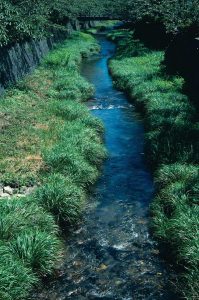
The delightful Nameri River, little more than a purling brook in places.
The border area between the central sights and this more rural section of the city is drawn by the ancient Kanazawa-kaido highway, once referred to as the ‘Salt Road,’ on account of its function as a transmission channel for salt and other important supplies. Sugimoto-dera is a temple of such vintage it was described in 1918 by Iso Mutsu, an English woman married to a Japanese nobleman, as “so ancient as to be approaching dilapidation.” Two intimidating Nio, or Deva King figures flank the main gate on the steep approach to the temple, their grimacing faces and bulging eyes enough to scare away the most malign spirits. A little further along the road is the entrance to Jomyo-ji, a temple with a long history but with buildings that seem to hail from more recent times.
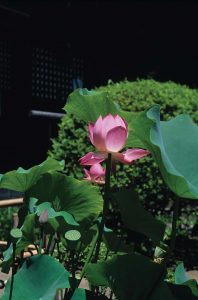
early summer mornings see lotuses bloom at Myoo-in.
The nearby grounds of Hokoku-ji, better known as the ‘Bamboo Temple,’ though much sold off and reduced for profit, have retained their central stand of trees and an austere garden, best viewed from a pavilion where powdered green tea can be sampled. The temple is approached by crossing the upper reaches of the stone strewn Nameri River. The remains of early priests are interred in niches hewn from rock up on the overhanging cliffs, surfaces worn into stony, ribbed wavelets, at the edge of the temple grounds. The writers Kume Masao and Yasunari Kawabata took up brief residence in the temple. Kawabata’s somber novel ‘The Sound of the Mountain’ was written here. Naruse filmed the novel in 1954. On the road close to the temple are a number of houses where the actress Hara Setsuko acted out scenes in Ozu Yasujiro’s classic film, ‘Tokyo Monogatari’. The former residence of the noble Kacho-no-Miya family is a short stroll up the hill from the temple. Built in 1929, the residence, known as the Kyu-Kacho no Miya Yashiki, looks like an interpretation of what an early Showa era person might think a Tudor mansion should look like. Large stone lanterns stand in the front garden, a telltale yearning for things Japanese.
Returning to the Salt Road and heading east, Myoo-in, a private prayer temple commissioned by Fujiwara Yoritsune, the fourth Kamakura shogun, comes as a surprise. Turn from the brisk north-south traffic of the ‘Salt Road’ and the temple seems to suppress motorized noise. Pressed up against another rock escarpment, the original wooden structure is topped with a thatched roof, another suggestion of the pastoral. Founded in 1235, it was dedicated to the protective deity Fudo Myoo, appointed as sentinel to the northeast of the city, the most vulnerable point according to Chinese geomancy, for demons and evil spirits to enter. When I visited there were lotuses set out in large pots. In autumn cluster-amaryllis and cockscomb bloom, while June sees an unaccustomed mass of people there to admire the hydrangeas.
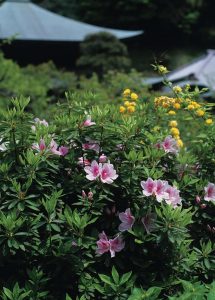
Blossoms at Zuisen-ji temple, often called the “flowering garden of Kamakura.”
Zuisen-ji is a fitting place to conclude a day in the green belt of Kamakura. The temple, connected to the Rinzai sect, was founded in 1327 by an extraordinary man, the Buddhist prelate Muso Soseki, an astonishingly gifted Zen master, and garden designer. The grounds are located in Momijigayatsu, a secluded and rather exclusive residential area of northeastern Kamakura. There is said to be a small wooden image of Soseki, sitting in a chair, in the depths of the Founder’s Hall, an Important Cultural Property that, with not a little touch of irony, cannot be viewed by the public.
The grounds look out over a valley, providing a wide view of woods and hills. Zuisen-ji consists of an intensely planted front garden with a formal schematic of stone paths geometrically aligned with the temple buildings. Despite the grid, the garden strikes the visitor as completely naturalistic, with cops of plum, cherry, hydrangeas, narcissus, peonies, Chinese bellflower, and a more obviously contrived wisteria trellis complimenting the dark, stained wood of the temple. The site is often referred to as the “flowering garden of Kamakura,” an apt description.
The grounds are approached by two stone stairs, a more ancient one, its angles picturesquely out of whack and covered in moss, and an easier to ascend granite stairway to the right. The climb through dark cryptomerias and bamboo glades is cool even in summer, partly because of the tree overhang, but also the dark earth that holds its moisture, a feature of these cliff-abutting northeastern temples grounds.
The stone garden at the rear of the temple is only slightly arranged, the cave and pond natural features, but the design, bare, stripped of flowers, plants or stone arrangements, can be ranked a masterpiece of Zen austerity. A quarried alcove and inner shelving suggests the former presence of Buddhist statuary. The cavern, known as the Angle’s Cave, certainly contained one well known image of Benten, goddess of the arts, but this has long since perished. Soseki is said to have sat here for hours in zazen meditation. Soseki’s rock garden and “heart” pond, were excavated and restored to their original state in 1970.
The effect of the dry landscape is perhaps, more unique and naturalistic than beautiful, the cliffs and caves suggesting less a garden in the formal sense than something akin to the sacred Buddha caves at Dunhuang in the far reaches of Western China. Whether Soseki’s experiment with the dry landscape garden resonates with the early pre-Shinto proto-gardens found in forest glades, or the rock arrangements, early stone gardens, made in ancient times on the edges of Chinese deserts, rather depends on the visitors’ gifts of re-imagination. The two very distinct gardens at Zuisen-ji are sometimes interpreted as the dual sides of reality, the designs apparently in opposition but actually in perfect harmony. The temple’s honorary name, Kinpeizan, derives from its autumn colors, a rich brocade encircling the temple. With their floral and arboreal cycles, the grounds are never the same.
If the tombs, burial chambers and sepulchers of northeast Kamakura remind us of the passing of time, the lush natural setting of paces like Zuisen-ji is more hopeful, reaffirming life and the prospect of seasonal revival.
TRAVEL INFO

Lotuses blossoming at Myoo-in.
Kamakura is well serviced by trains coming in from Tokyo and Yokohama. Either Kita-Kamakura or Kamakura stations will do for the sights mentioned here. Kamakura station has the advantage with a bicycle rental shop just to the right of the station as you exit. There is also a good tourist information office with English maps beside the station. John Carrol’s ‘Trails of Two Cities’ offers good coverage. ‘Kamakura: Fact and Legend,’ by Iso Mutsu, is an interesting period guide. When it appears next year, Burritt Sabin’s book on the city is destined to be the definitive history of Kamakura. A wonderful source for navigating the arcane background and nomenclature of Kamakura’s Buddhist statuary can be found at Kamakura expat resident Mark Schumacher’s site www.onmarkproductions.com/html/terminology.shytm
Story and Photographs by Stephen Mansfield
From J SELECT Magazine, December 2010

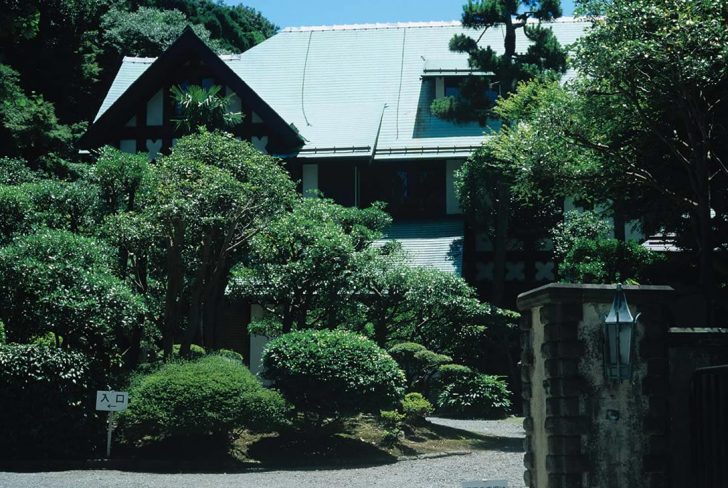

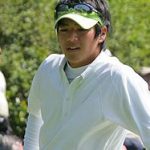

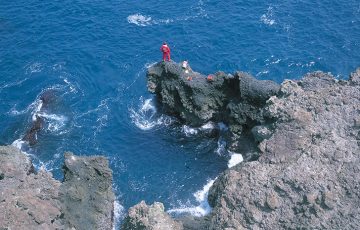
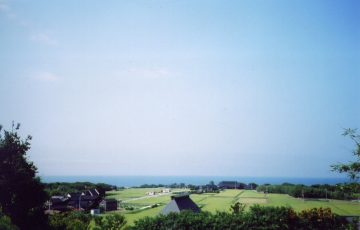

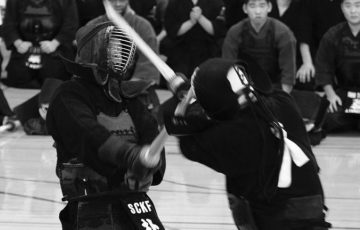
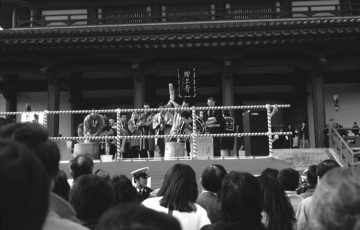
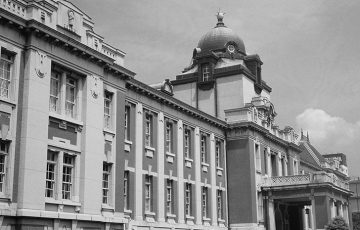
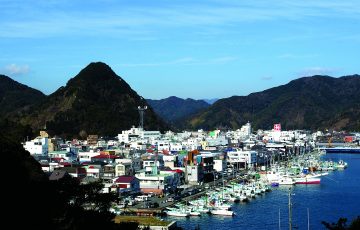
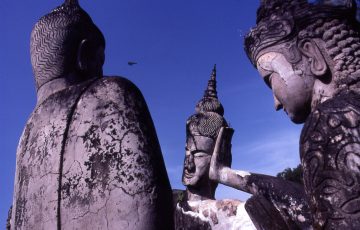


Recent Comments